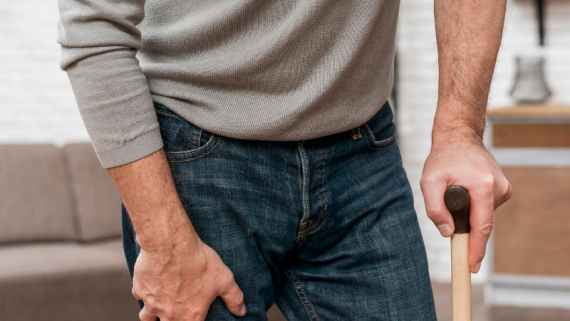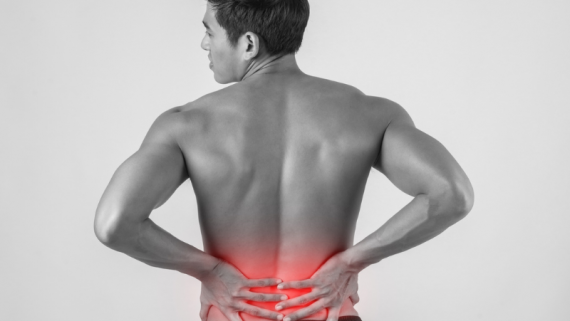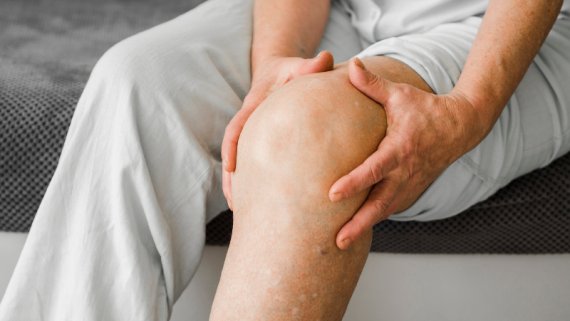Chronic pain becomes a harsh reality for many individuals as they cross the age of 60. Whether it’s aching joints, persistent back pain, or arthritis-related discomfort, the toll it takes on daily life is undeniable. While traditional pain management options often involve long-term medication or invasive surgeries, a new, promising solution is changing lives — stem cell therapy. Learn about how stem cell therapy is helping in managing chronic pain after 60 here. Why Chronic Pain Increases After 60 Aging naturally brings about degeneration in cartilage, joints, tendons, and bones. Conditions like osteoarthritis, degenerative disc disease, and chronic joint inflammation are common in older adults. Many seniors turn to painkillers or joint replacement surgeries, but these options come with side effects, risks, and prolonged recovery times. That’s where stem cell therapy comes in as a breakthrough approach for non-surgical recovery. How Stem Cell Therapy Works Stem cell therapy involves using the body’s natural regenerative cells to repair damaged tissues. These stem cells can be harvested from bone marrow or adipose tissue and then injected into the affected area. Once introduced, they begin repairing cartilage, reducing inflammation, and promoting healing at a cellular level. For elderly patients, this can
Chronic back pain is a debilitating condition that affects millions of people worldwide. Traditional treatments such as pain medications, physical therapy, and even surgery often provide only temporary relief. In recent years, stem cell therapy has emerged as a revolutionary approach to treating back pain by addressing the root cause of the problem rather than just masking the symptoms. If you are struggling with persistent back pain, consulting a Back Pain Treatment Specialist in Kolkata, like Dr. Krishna Poddar, can help determine if stem cell therapy is the right option for you. In this blog we will discuss about how Stem Cell Treatment help with Back Pain. What is Stem Cell Therapy? Stem cell therapy is a regenerative medical treatment that utilizes the body’s own stem cells to repair and regenerate damaged tissues. These stem cells have the unique ability to develop into different types of cells and promote healing. When injected into the affected area of the spine, they help repair damaged discs, reduce inflammation, and restore function. How Stem Cell Treatment Help With Back Pain
- Stimulates Tissue Regeneration
The spine’s discs and surrounding structures can deteriorate over time due to agi
Knee pain is a common issue that affects millions of people worldwide, often reducing mobility and quality of life. Traditional treatments, such as pain medications, physical therapy, and even surgery, may not always provide lasting relief. Platelet-Rich Plasma (PRP) therapy has emerged as a promising alternative, offering natural healing and regeneration. If you’re struggling with persistent knee pain, consulting a Knee Pain Treatment Specialist in Kolkata, like Dr. Krishna Poddar, can help determine whether PRP therapy is the right option for you and learn why PRP can be the best alternative for Knee Pain Treatment Understanding PRP Therapy PRP therapy is a regenerative treatment that utilizes the patient’s own blood to accelerate the healing process. The procedure involves drawing a small amount of blood, processing it to concentrate platelets, and then injecting the platelet-rich plasma into the affected knee joint. These platelets release growth factors that promote tissue repair, reduce inflammation, and improve joint function. Why PRP Therapy is a Superior Alternative
- Natural Healing Process
Unlike medications that only mask pain symptoms, PRP therapy stimulates the body’s natural healing
Pain management has evolved significantly over the years, with stem cell therapy emerging as one of the most promising breakthroughs. Traditional pain treatments, including medications and surgery, often provide temporary relief or come with significant risks. Stem cell therapy offers a regenerative approach that not only alleviates pain but also promotes healing at the cellular level. In this blog, we explore how Stem Cell Therapy Revolutionizes Pain Management, its benefits, and its effectiveness. Understanding Stem Cell Therapy Stem cell therapy involves using the body’s natural repair mechanisms to treat various medical conditions, including chronic pain. Stem cells have the unique ability to develop into different types of cells, aiding in the regeneration of damaged tissues. These cells are often derived from bone marrow, adipose tissue, or umbilical cord blood and are injected into the affected area to promote healing and reduce inflammation. Benefits of Stem Cell Therapy in Pain Management
- Regeneration and Healing Unlike traditional pain management methods that merely mask symptoms, stem cell therapy promotes the regeneration of damaged tissues, addressing the root cause of pain.
- Non-Surgical Alternative For individuals suffering from chronic pain due to conditions like osteoarthriti
Winter can be a challenging season for seniors, especially those dealing with chronic knee pain. The drop in temperature often intensifies joint discomfort, limiting mobility and affecting daily life. Understanding the causes, taking preventive measures, and exploring non-surgical treatment options can help seniors stay pain-free. With insights from knee pain consultant in Kolkata, Dr. Krishna Poddar, let’s explore how to manage knee pain effectively during winter. Causes of Winter Knee Pain in Seniors
- Cold-Induced Stiffness Low temperatures can cause muscles and joints to stiffen, reducing flexibility and increasing discomfort in the knees.
- Barometric Pressure Changes A drop in barometric pressure before cold weather can cause tissues in the knee to expand, putting pressure on nerves and leading to pain.
- Reduced Physical Activity Seniors tend to stay indoors during winter, reducing their activity levels. This inactivity can weaken the muscles supporting the knees, exacerbating pain.
- Existing Conditions Chronic conditions like osteoarthritis or rheumatoid arthritis often worsen during winter due to inflammation and decreased circulation.
In 2018, renowned Bollywood actress Anushka Sharma revealed that she was battling a bulging or slip disc, a spinal condition that can cause intense pain and mobility issues. This incident brought widespread attention to the condition, encouraging many to learn about its causes, symptoms, and treatments. Here’s an in-depth look at what causes a bulging disc, its symptoms, and how Anushka Sharma likely managed her recovery. What is a Bulging Disc? A bulging disc occurs when the outer layer of a spinal disc protrudes into the spinal canal. Spinal discs act as cushions between the vertebrae, and when they are damaged, they may bulge, leading to nerve compression and associated discomfort. While bulging discs can occur anywhere along the spine, they are most commonly seen in the cervical (neck) or lumbar (lower back) regions. Causes of Bulging Disc Several factors can lead to a bulging disc:
- Age-Related Degeneration: Over time, spinal discs lose their hydration and elasticity, making them more prone to damage.
- Repetitive Movements: Continuous bending, twisting, or lifting heavy objects improperly can strain the spine.
- Injury or Trauma: Accidents or sudden impacts can cause damage to spinal discs.
- Obesity: Excess body weight puts additional stress
Chronic pain can significantly impact the quality of life, and traditional treatments often involve medication or invasive procedures. Enter Platelet-Rich Plasma (PRP) therapy—a revolutionary, minimally invasive solution that harnesses the body’s healing powers to alleviate pain and promote recovery. Let’s delve into how PRP therapy is revolutionizing pain management, its benefits, and its effectiveness in treating various conditions. What Is PRP Therapy? PRP therapy involves drawing a small amount of the patient’s blood, processing it to concentrate platelets, and injecting the platelet-rich plasma into the affected area. These platelets contain growth factors that stimulate tissue repair, reduce inflammation, and accelerate healing. Benefits of PRP Therapy in Pain Management
- Natural Healing Unlike medications that merely mask symptoms, PRP therapy addresses the root cause of pain by promoting tissue regeneration and repair.
- Minimally Invasive PRP therapy is a simple, outpatient procedure that doesn’t require surgery, reducing the risk of complications and downtime.
- Effective for Various Conditions PRP therapy is beneficial for managing joint pain, sports injuries, arthritis, tendonitis, and back pain. It’s particularly effective in cases where traditiona
Headaches can disrupt your daily life, making it difficult to focus, work, or even relax. But did you know that the cause of your headache might not be in your head at all? For many, headaches are closely linked to issues in the neck or shoulder region. This type of headache, known as a cervicogenic headache, originates from the cervical spine and nearby areas. Here, we share insights on is your headache linked to neck or shoulder Pain and provide expert advice on how to alleviate these symptoms for improved well-being. How Neck and Shoulder Pain Can Lead to Headaches When muscles and nerves in the neck or shoulder are strained, irritated, or injured, they can radiate pain to the head. Here’s a closer look at some of the common causes:
- Muscle Tension and Strain: Poor posture, prolonged computer use, or heavy lifting can strain the muscles around the neck and shoulders, creating tension that can travel upwards to the head.
- Nerve Irritation: Nerves in the neck, such as the greater occipital nerve, connect to the head. When these nerves are compressed or irritated, they can trigger headaches.
- Joint and Spine Issues: Problems like cervical spine misalignment, arthritis, or degenerative disc disease can also lead to cervicogenic headaches, as they stress the joints and muscles in the nec
In recent years, stem cell therapy has emerged as a ground-breaking treatment option for individuals suffering from chronic joint pain. From osteoarthritis to cartilage damage, this innovative approach has shown promising results for patients seeking relief beyond traditional pain management or invasive surgeries. But is stem cell treatment the future of joint pain relief? Let’s dive into the science, benefits, and potential of this cutting-edge therapy, explained by experts in the field. Understanding Stem Cell Therapy Stem cells are unique, undifferentiated cells that have the ability to transform into various specialized cell types in the body. This remarkable property allows them to regenerate damaged tissues, making them an ideal solution for treating joint-related issues. In joint pain treatment, stem cells are often harvested from the patient’s bone marrow or adipose tissue. Once collected, they are processed and injected into the affected area, where they promote the regeneration of cartilage, reduce inflammation, and improve joint function. Applications in Joint Pain Management Stem cell treatment is increasingly being used to address a variety of joint pain conditions, including:
- Osteoarthritis: Stem cells help repair worn-out cartilage and reduce inflammation, improving joint mobility and reducing pain.
Joint pain is a widespread problem affecting millions of people, from those with sports injuries to individuals suffering from degenerative conditions like arthritis. Traditional treatments like medications, physical therapy, and even surgery can help alleviate symptoms, but they don’t always address the root causes. In recent years, stem cell treatment has emerged as a promising solution for joint pain by focusing on tissue regeneration and inflammation reduction. Here’s everything you need to know about how stem cell therapy works for joint pain relief and whether it’s the right choice for you from Dr. Krishna Poddar, the Stem Cell Treatment Specialist and only centre in Kolkata and West Bengal. What is Stem Cell Treatment? Stem cells are unique cells in the body with the ability to transform into specialized cells like muscle, bone, or cartilage cells. This capacity for transformation allows stem cells to repair and regenerate damaged tissues, making them an effective treatment for various conditions, including joint pain. In stem cell therapy for joint pain, these cells are harvested (often from the patient’s own bone marrow or fat tissue), processed, and then injected into the affected joint. How Stem Cell Therapy Works for Joint Pain Stem cell treatment offers a targeted, natural approach to joint pain relief, hel










